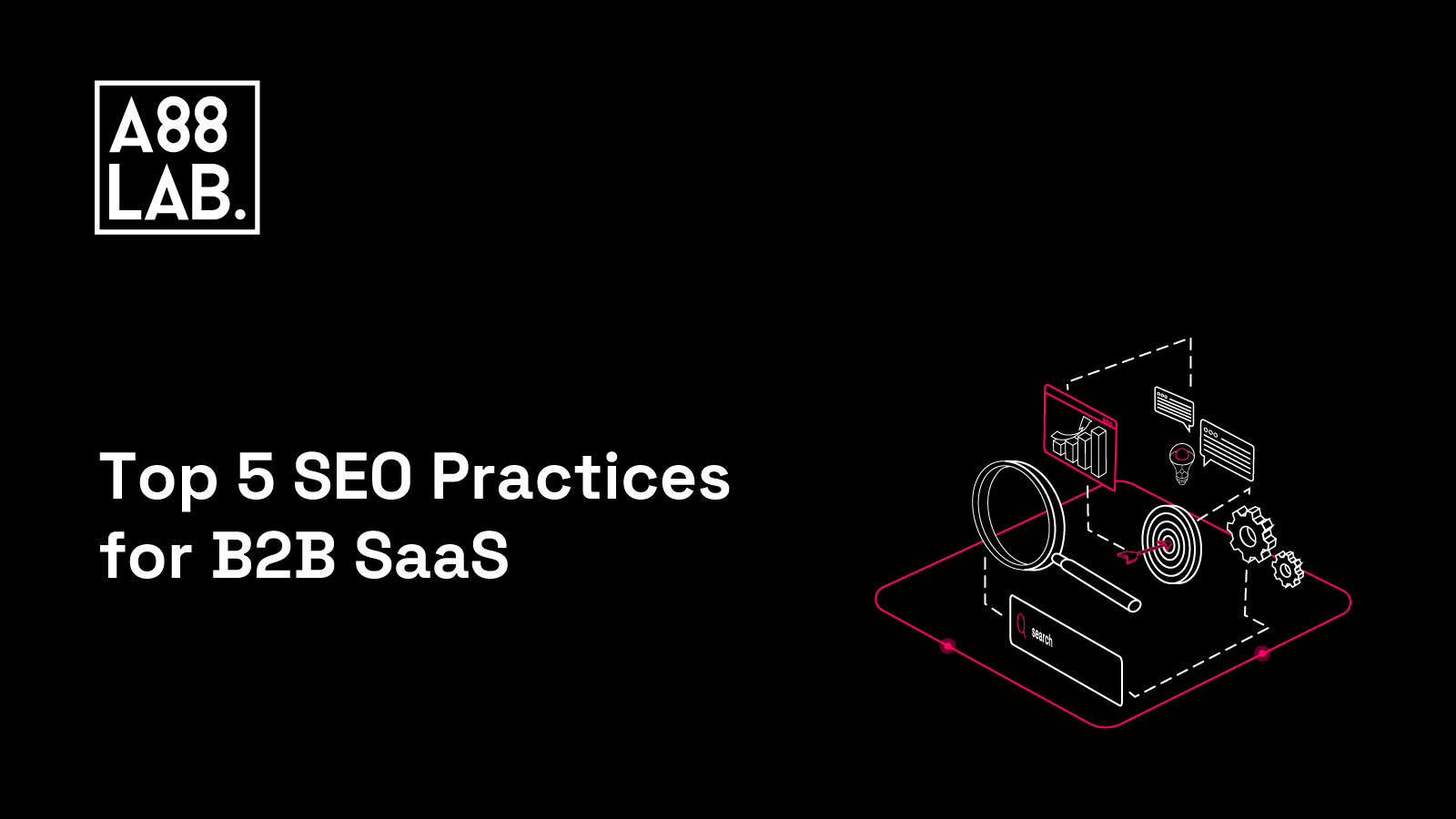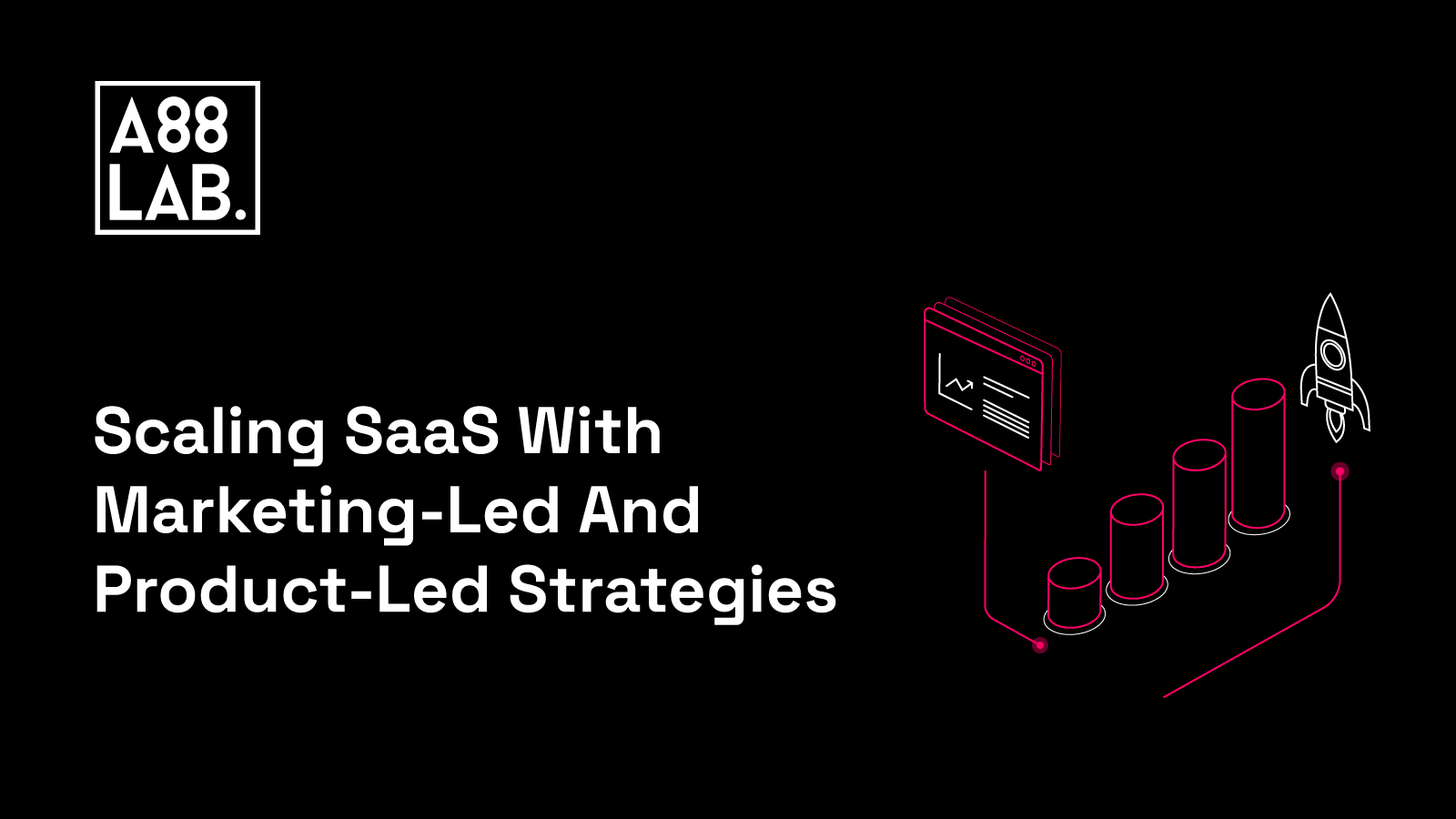Even the best SaaS product can still fail. In fact, only 35% of SaaS companies survive for longer than 10 years, and only 40% of them end up being profitable. To avoid such a position, where you believe you have a great SaaS product but still fail, you need to develop a strong Go-To-Market (GTM) strategy.
Why is a GTM strategy the essence for a successful SaaS product?
A well-crafted Go-To-Market strategy covers all of the essential components when launching a product. It’s a strategy that outlines, in detail, how your SaaS product will enter and capture the target market.
A Go-To-Market strategy reduces your chances of failure because:
- It maps out all important touchpoints, including who your potential customers are, what are their pain points, who your direct competitors are, what strategies they implement, etc.
- It covers how you’re going to position yourself to stand out from your competition.
- It ensures that your product fits the user’s needs before even launching, so the product-market fit is solved.
- It’s a strategy that helps you determine the customer acquisition cost (CAC) and choose the most suitable strategy for your SaaS company and product.
No matter if you’re entering a completely new market with your new product, entering a new market with your existing product, or testing new products in different markets to discover growth potential, a Go-To-Market strategy will help you succeed in all three cases.
How to Build Your Go-to-Market Strategy in 9 Steps
Now that we have covered what a Go-To-Market strategy is and why is essential for SaaS companies let’s take a look at what it takes to build one:
Step 1. Start With Product-Market Fit
Before you pursue your product idea and start with the developing process, validate your idea through product-market fit. Validating your idea is especially important if your SaaS product is new to the market and there are no role models/competitors with a product similar to yours.
The main role of the product-market fit is to prove that your product solves specific pain points, people see the value in it, and they are ready to pay for it. You have a successful product-market fit when people not only use your product but also recommend it to their friends and family.
The crucial step here is to test your product and gather feedback as much as possible before you invest more effort in your idea. You can do customer interviews, user research, or Net Promoter Score surveys. By gathering feedback early on, you can adjust your product or service to better fit what people actually want. This is the best insurance against failure.
Step 2. Define Your Market
Once you’ve identified that you have a product that solves problems, take a step back and see in which market you are most likely to succeed. What this means is that before investing more resources in your product development, do your market research and get a better understanding of the market you want to jump in. Ask yourself questions like:
- Why do I want to sell in this market?
- What is the total market size?
- What are the specifics of this market?
- Who are my direct competitors in this specific market?
- How am I going to differentiate myself from my competitors?
- Who are the decision-makers in this specific market?
Defining your market will help you get a better picture if you are heading in the right direction. You can see in which market your product offers the most value so you can allocate your resources where you would achieve the greatest success.
Step 3. Target the Right Audience
Before you identify your target audience, start with identifying your ideal customer profile (ICP) and your buyer persona. These two methods are the foundation of any successful product and service.
Ideal customer profile outlines the characteristics of the perfect customer for your product, focusing on those who face the problems your product solves. When it comes to defining your ICP, first look at factors such as industry, business size, budget, decision-making factors, etc.
Then, work closely with your product team to get a better grasp of the market gaps that you want to close. It’s a lot easier to narrow down an ICP once your product is established. After you gather this information, create a hypothesis on who your potential customer is and test it. This could be in the alpha or beta process or in a separate user testing.
Your target audience is not made up of carbon copies of the same person. It’s made up of individuals who have unique problems, values, and goals. This is why identifying your buyer persona is equally important as identifying your ICP. Unlike an ICP, which outlines the perfect customer for your product, buyer personas break the ICP and go deeper into specific segments of your audience.
Step 4. Set Your Pricing Strategy
Price is more than just a number you put on your product. It’s a strategy that affects your whole business. You don’t want to set your price too low or too high. If you do, you risk not moving your product or eating too much into your profit margin. A good price is one that provides value to your target market while also allowing you to gain a competitive advantage.
When it comes to the SaaS industry, there are a few pricing models you can pick from, like user-based pricing, competition-based pricing, penetration pricing, etc. When deciding on your pricing strategy, here are a few factors you want to consider:
- Your costs and revenue goals
- Your customer profile
- The value you provide
- Your competitors in the market
Here is an example of Xero using user-based pricing strategy:
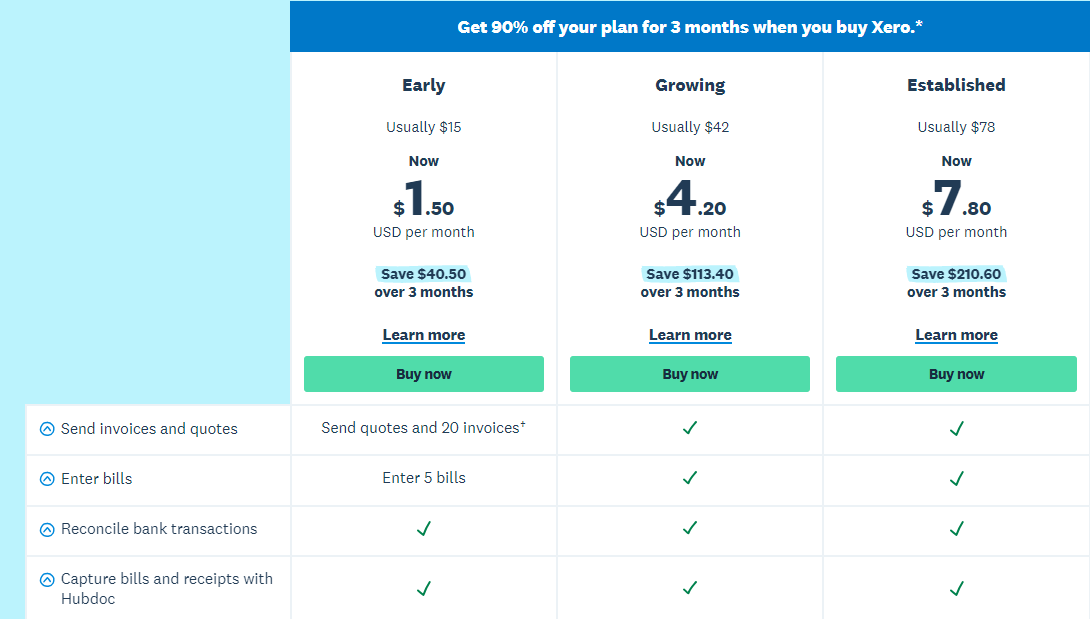
Figuring out SaaS pricing can be a complex and challenging process, but with the right approach and a good understanding of your costs, revenue goals, market, competitors, and customers, you can find a pricing model and strategy that works best for your product and customers.
Step 5. Define Your Positioning and Key Messaging
After you identify your target audience, the next step is to craft compelling key messages you’ll use to communicate with them. Key messages are the main points of information you want your audience to hear, understand, and remember. They are bite-sized summations that articulate what you do, why you do it, how you are different, and what value you bring to stakeholders.
The best way to create messages tailored for each buyer persona is by creating a value matrix. A value matrix breaks down each persona, their pain points, the value your product brings, and a key message that delivers how your product can solve its unique problem.
Step 6. Choose your Distribution Model
The distribution model defines the channels you use to deliver your products to your customers. When it comes to SaaS products, distribution refers to who sells the product to the customer and the methods they use to do so. The SaaS distribution channels can be split into two main categories:
- Direct distribution channels
- Indirect distribution channels
Direct distribution channels involve a SaaS company’s own employees, to contact and sell to the customers. On the flip side, indirect distribution channels refer to SaaS companies selling through a third party. These third parties can be resellers, app stores, sponsorships, affiliate marketers, etc.
Here is an example of Shopify as an indirect distribution channel:
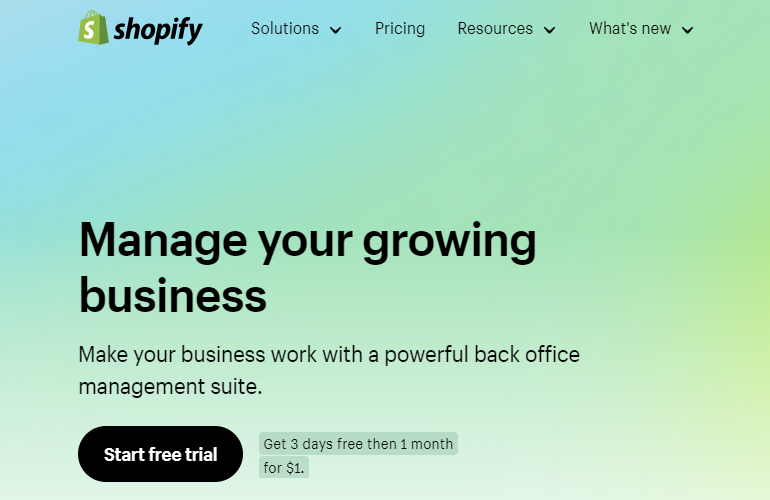
Choosing between indirect and direct distribution channels will depend on your business goals, target audience, resources, etc. The combination of the two of them is also always an option.
Step 7. Map the Buyer's Journey
Once you identify your target audience and form your key messages, you can move on to mapping out the buyer’s journey. Mapping out the buyer’s journey will help you create targeted content and touch points so you can easily guide your prospects through their journey.
The best way to map out the buyer’s journey is by visualizing it as a funnel and then breaking it into three parts:
- Top of the funnel: Customers who know they have a problem and are actively looking for solutions to solve it, but they might not be aware of your product. The goal here is to grab their attention and start considering your product as one of their alternatives.
- Middle of the funnel: Customers start comparing your product against the other available options. The goal here is to stand out and convince your customers why your product is the best.
- Bottom of the funnel: Customers make their final decision whether to purchase your product or not. The goal is to persuade them to commit.
By aligning your messaging and tactics with each stage of the buyer journey, you can ensure a smoother and more persuasive sales process, increasing your chances of conversion.
By following these five steps – starting with product-market fit, defining your market, targeting the right audience, deciding your key messaging, and mapping the buyer journey – you can ensure that your product enters the market effectively, resonates with your target customers, and drives sustainable growth.
So, don’t overlook the importance of a well-developed GTM strategy. It could be the difference between thriving and merely surviving in the competitive SaaS landscape.
Step 8. Set your Sales Strategy
The goal of your GTM strategy is to sell the product, so having a sales strategy of how you’re gonna sell it is vital. The four most common sales strategies you can implement for your SaaS product are:.
The best way to map out the buyer’s journey is by visualizing it as a funnel and then breaking it into three parts:
- Self-service model: Customers sign up and use your product through your website or app. This sales process is common for SaaS products and does not require a dedicated sales team. However, you need to invest in marketing to drive traffic to your website and encourage sign-ups.
- Inside sales model: Your sales team nurtures and educates potential customers to convince them to purchase your product. This sales model is suitable for SaaS products that require a longer sales cycle, such as enterprise software.
- Field sales model: Salespeople focus on closing big enterprise deals. This sales model requires more sales investment and a longer sales cycle, but it can lead to significant payoffs. For example, you might use a field sales model to sell a SaaS product that caters to large organizations.
- Channel model: An external partner, such as a reseller or a referral partner, sells your product for you. This option gives you less control over how you market your product, but it can be an effective way to reach new customers. For instance, you could partner with a software consulting firm to sell your SaaS product to their clients.
Remember, you can always mix and combine these strategies, whatever suits your business the best.
Step 9. Measure your KPIs
Go-to-market KPIs measure the success or failure of your product launch. They provide a complete overview of the company’s marketing, sales, and customer success, tell you how close you are to achieving your product goals, and if there are some areas that need improvements.
Some most important KPIs you want to measure to achieve a successful product launch are:
- Customer Acquisition Cost (CAC): Measures the average cost to acquire a new customer.
- Customer Lifetime Value (CLTV): Measures the predicted net profit attributed to the entire relationship with a customer over their lifetime.
- Trial signups: Measures the number of free trials started by prospects in a specific time frame. They also illustrate long-term product usage.
- User retention rate: Measures how many prospects convert into customers, more specifically, how many customers were retained by the company in a particular period.
- Monthly revenue: Measures the product’s impact on the market.
- Rate of market share: Measures the percentage of the market that is buying your company’s product compared to competitor brands.
By following these steps, you ensure that your product enters the market effectively, resonates with your target customers, and drives sustainable growth. So, don’t overlook the importance of a well-developed GTM strategy. It could be the difference between thriving and merely surviving.
4 Types of Go-to-Market Strategies
As we already mentioned, a Go-To-Market strategy is a comprehensive plan for bringing your product to the desired market. Where most B2B SaaS companies are facing challenges is that they know what GTM is meant to do; they just don’t know where to start with it. To make the process of developing a GTM strategy a little bit easier for you, here are a few approaches you can implement:
1. Demand Generation As Your Go-to-Market Strategy
Demand generation is a strategy that will help you to keep your product or service at the top of your customer's minds who aren’t currently buying from you. Its goal is not just a one-time transaction. The idea is to build a long-term relationship with the customers by first educating them through different types of ungated content and then keeping them engaged and interested until they are ready to buy.
Demand generation covers the whole buyer journey, from the awareness stage to the point of purchase and beyond. By implementing it as your Go-To-Market strategy and by constantly educating your targeted audience on how your product solves its pain points, you’ll generate high-quality leads, ultimately increasing your revenue.
2. Account-Based Marketing (ABM) As Your Go-to-Market Strategy
The main focus of ABM is B2B sales. But when trying to make B2B sales happen, ABM doesn’t just focus on any type of prospects. It’s a comprehensive strategy that specifically targets and sells directly to your best-fit, highest-value accounts instead of spreading its resources tightly across a generic audience.
ABM allows you to craft a hyper-focus personalized marketing strategy that reaches out and engages with those most valuable accounts. By weeding out the less valuable accounts and prioritizing the ones with the highest potential for success, ABM leads to better results and achieves maximum ROI.
Incorporating ABM as your GTM strategy, instead of selling your product to random customers and thus focusing on high-intent customers, will increase your chances of conversions. Higher conversion rate = higher ROI.
3. Product-Led Growth as a Go-to-Market Strategy
Product-led growth is a go-to marketing strategy that makes your product the primary tool for customer acquisition, retention, and expansion. The goal is for a product to deliver value so quickly and easily that it essentially “sells itself."
Its primary focus is attracting customers to try your product and experience its value first-hand. This approach assumes that happy customers will spread brand awareness to other potential customers.
Companies using this approach typically offer some type of freemium model, where users can experience the basic product for free. Then, if they’re satisfied with their initial experience, they will upgrade to the full, premium version of the product.
Consider this strategy as your Go-To-Market strategy if:
- Your target audience is tech-savvy users.
- The entry price is low.
- The users can independently adopt the solution and have a significant influence on buying decisions.
- There’s an internal agreement between product and customer experience teams that the product is of superior quality and meets the needs of end users.
4. Sales-Led Growth as a Go-to-Market Strategy
Sales-led GTM heavily relies on marketing and sales efforts for customer acquisition. While your product is important here as well, it’s not the center of attention. Unlike product-led growth, sales-led growth relies on the salespeople's personal touch to drive conversion and engagement. This approach requires a deep understanding of the buyer’s challenges and demonstrating how your product can deliver tangible results.
Sales-les works best for complex solutions where customer education is crucial( such as enterprise software solutions), which require a more consultative approach with buyers.
As you can see, there are several GTM approaches you can go with, but the best part is that you don’t have to choose just one. Some of the most successful SaaS companies use a combination of these approaches in their GTM strategy. You can combine the product-led strategy with the sales-led strategy or combine demand generation with ABM, whatever works best for you.
Successful Examples of Go-to-Market Strategies
If you are still hesitating about whether you should or should not start developing your Go-To-Market strategy, here are some successful examples that might change your mind:
Example 1: Loom
Loom’s GTM strategy, which included first changing the company’s messaging from “free screen & video recording software” to “video messaging for work,” then changing the hero section from “video recording simplified” to “say it with a video” which enabled them to communicate their message to their audience a lot more effectively.
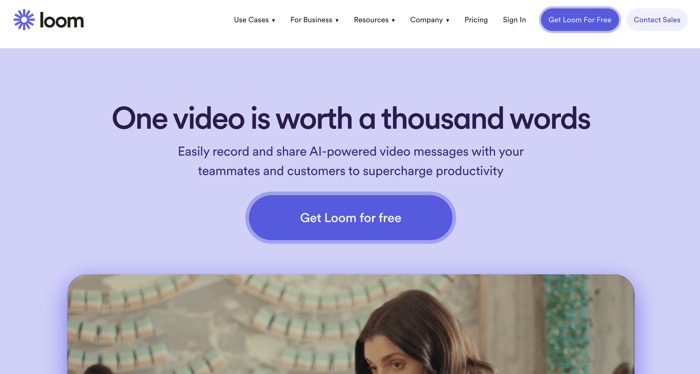
Eventually, Loom’s user base grew to 4 million users from 90,000 companies, including leading brands like Slack and LinkedIn.
Example 2. Taxjar
When Taxjar launched, there wasn’t much content around taxes. So, they implemented a Go-To-Market strategy in which content marketing and SEO were the main focus.
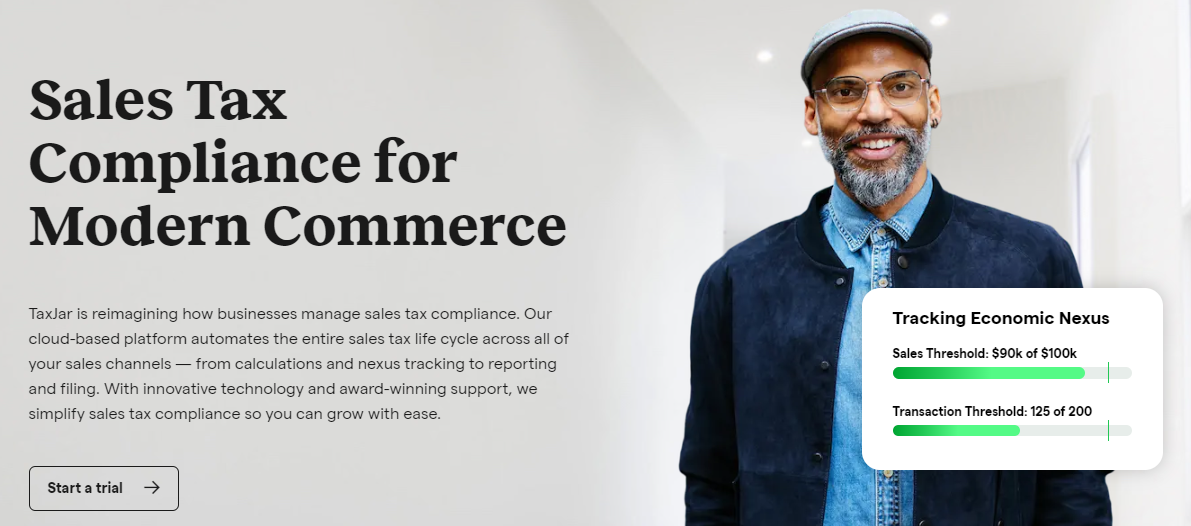
By creating quality, ungated content focused on educating its customers about taxes and answering tax-related questions, Taxjar was able to reach its target audience and communicate the value of its product, resulting in a continuous stream of customers with a high ROI.
Example 3. Outreach
When Outreach found out that sales leaders face complexity due to the use of multiple tools and platforms, which lead to fragmented data and decreased productivity, they decided to create a sales execution platform that can provide a complete picture of the sales cycle.
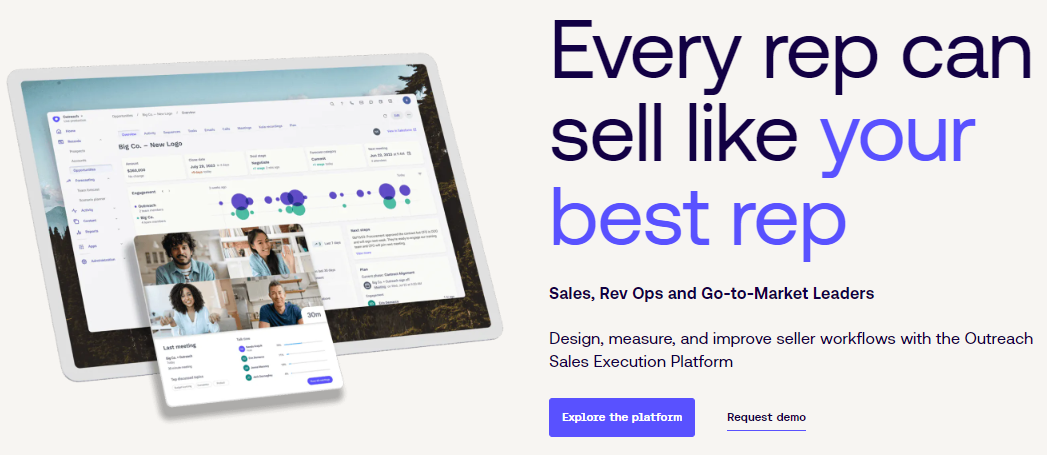
After conducting market research, they got a better understanding of their target audience and developed a sales execution platform that helps with the seller's productivity. The result of implementing this platform included a significant increase in win rates by 13% and in revenue by 9%, with over 5,500 global customers trusting it.
Conclusion
Any SaaS company that is looking to launch or relaunch its product in the market should start by developing a Go-To-Market strategy. No matter how good you think your product is, launching without a plan of how you’re gonna attract customers and stand out from the competition can end up being a costly mistake. Regardless of how good you think your product is, it’s always best to launch the right way, at the right time, and to the right audience.
.png)
-Strategy-for-a-SaaS-Company-+-How-to-Build-One_Featured-image.png)
